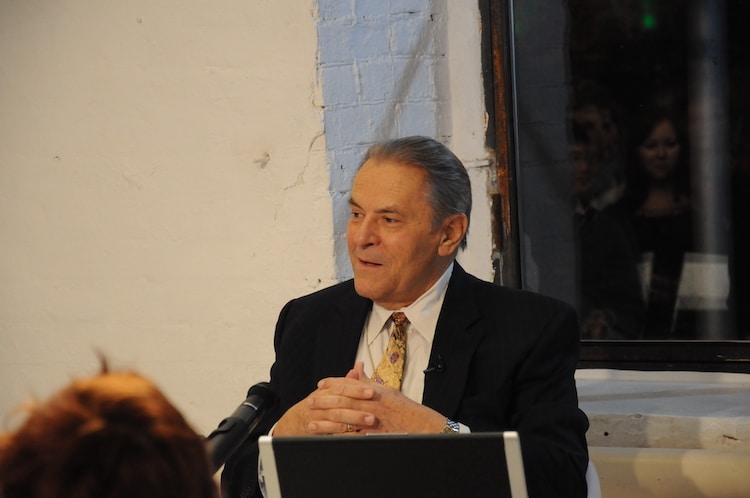
How To Do Holotropic Breathwork
There are a lot of questions online about holotropic breathwork although it is not a new technique. But if you’re new to this natural way of having a psychedelic experience, you may be asking, “How do I learn holotropic breathwork?” or “Is holotropic breathwork safe?” Whatever information you come across, the most crucial thing to remember about how to do holotropic breathwork is doing it in a safe environment.
Table of Contents
What Is Holotropic Breathwork?

“Holotropic” means moving towards wholeness. It comes from the Greek words “holos” (whole) and “trepein” moving toward something.
Holotropic Breathwork (HB) is a breathing technique developed around the 1970s by LSD researcher, Dr. Stanislav Grof, and his wife Christina Grof. It was intended to be an alternative to LSD or other psychedelics that alter a person’s state of consciousness. HB is also called “holotropic therapy,” and “Grof therapy.”
The idea is to reduce oxygen in the lungs by taking deep, forceful breaths until your body enters into an altered state of consciousness. At this stage, you may feel as if you’re in a lucid or waking dream. You may see vivid images or hear things no one else can. These are some of the hallucination effects of HB. As such, a self-induced psychedelic trip should be done with the help of a holotropic facilitator certified through the Grof Transpersonal Training Program. It is important to keep this at the forefront of your mind as you attempt to learn more about how to do holotropic breathwork. If you are interested in learning more, checkout our article on holotropic breathwork training.
Research demonstrates that when someone takes a psychedelic, it decreases blood flow and electrical activity in the brain’s “default mode network”, a group of brain structures found in the frontal and pre-frontal cortex responsible for our ego or sense of self; it “lights up” when we daydream or self-reflect.
Psychedelics slow our default mode network slows down, so with the ego prevented from acting, the boundaries between self and world, subject and object dissolve. These processes may be related to something called the “primary mystical experience,” a phenomena highly correlated with therapeutic outcomes.
Why Not Psychedelics?
Psychedelics are natural or man-made hallucinogenic substances such as Ayahuasca, Psilocybin, (Magic Mushrooms), the now-made-infamous, LSD (lysergic acid diethylamide), Ketamine, and DMT (N,N-Dimethyltryptamine).
The Food and Drug Administration (FDA) banned psychedelics because they are mind-altering substances. Before and after the ban, researchers believed LSD (and now Psilocybin) are promising treatments for mental disorders such as anxiety, depression, and addiction.
The ban led to a search for alternative ways to induce a psychedelic trip. Hallucinations (altered perceptions) are the main feature of this “trip” or experience. The short-term physical, mental, and emotional effects are also unpredictable and may interfere with the person’s ability to think or communicate rationally.
However, people who have gone on the trip described it as “life-changing” or “transformative.” Some may even seek a psychedelic integration therapist to help them figure out how to use their insights to better their lives.
Holotropic Breathwork Benefits
Holotropic breathing provides a drug-free way to use your lungs to induce a psychedelic experience. This is achieved by breathing in a way that deprives the lungs of oxygen.
Breathwork can pave the way for mental, spiritual, and physical self-healing and achieving a higher level of awareness. Other potential benefits include changes in behavior and a more positive outlook on life.
Believers of HB say it can help uproot mental issues that need addressing or help the participant, or “breather,” manage the following problems known to interfere with a person’s quality of life.
- Stress
- Chronic pain or migraines
- Anxiety disorder
- Depression
- Mental trauma
- Addictive behaviors
- Post-traumatic stress disorder (PTSD)
One study confirmed that holotropic breathing therapy may be beneficial in the treatment of psychiatric disorders such as depression and anxiety.
Moreover, participants of Grof Therapy reported an increased level of self-trust, self-esteem, self-love, energy, and mental clarity in personal issues they were struggling with. They are able to release and let go of rooted emotions or negative experiences. Therapeutic breathing itself also improves respiratory capacity and blood circulation.
The Basics on How To Do Holotropic Breathwork
The following HB techniques are based on those generally used at holotropic breathwork group sessions or workshops. Your workshop instructor, practitioner, or “sitter” can provide more specific holotropic breathwork instructions and guidance on questions like “How do I learn holotropic breathwork? and whether it is safe to do at home.
During an HB session, you will lay on a mat with your eyes closed in preparation for breathwork. Evocative music, e.g., drumming, is usually played in the background to help you connect with your inner self. Your main goal is to move more air through your lungs, faster and stronger than normal until you enter into a non-ordinary state of consciousness.
Holotropic Breathwork Instructions
- Short intense breaths – Start by taking short intense breaths that you feel at the “bottom” of your lungs. There should be no gaps in your breathing. Start exhaling when your lungs are almost filled.
- Full deep breaths – Next, follow up with long, deep breaths and exhaling. You’ll do this exercise over an extended period of time (usually 2-3 hours). The long timespan is needed to alter your state of consciousness.
- Mouth vs nose breathing – Some breathers prefer to inhale and exhale through their mouths. Some choose to breathe in and out through their nose. Others find it easier to breathe in through their nose and exhale through their mouth.
A Typical Holotropic Breathwork Session
Most often provided in a group setting by a facilitator, Holotropic breathwork may also be offered in individual sessions. A facilitator guides the 2 to 3 hour session. While direction is given to increase the speed and rhythm of the breather’s breathing, there is not a specific guideline or expectation of what must occur or what issues are explored during a session.
– Usually people are paired off in a group setting. There is one “breather” and one “sitter.” The breather is the person practicing and experiencing breathwork, while the sitter helps the breather if needed and ensures that the breather is safe and supported during the session.
– Breathers and sitters swap roles for future sessions.
– The breather is told to breathe faster and deeper while keeping their eyes closed. While the speed of breathing increases, attention is paid to keep breathing even, which helps practitioners avoid complications from hyperventilating.
– The breather will lie on a mat for the duration of a session. Laying down grounds the breather and gives them the ability to move freely, in whatever pose their breath takes them.
Afterward, participants draw mandalas about their experience and discuss what happened. This could be the re-experiencing of past trauma, feelings of joy, or the development of spiritual awareness. Essentially, the goal is for HB to be a catalyst for bringing to the surface the most important issues a person needs to address.
What to Expect During and After Holotropic Breathwork
There are generally no other specific instructions about the nature, rate, or pattern of breathing when performing HB. Things are just allowed to take their natural course. Your sitter should not interrupt during this time unless it’s necessary for your health and safety.
After about 20 minutes, your body should become in sync with what you’re doing. You may feel like you’re dreaming or experience things in your mind that are not real once the state of your consciousness changes.
Your “sitter” will remain at your side to ensure you are physically safe, comfortable, and supported throughout the entire session. At the end of your breathwork, the instructor usually changes the music to something more peaceful such as meditation music.
The session is open-ended. This means that each person is able to derive their own meaning and attain self-discovery in whatever form that means for them. In addition to moving in any way that they want, breathers are encouraged to make any sounds that feel right to them.
Participants of holotropic breathwork may try to get insights from the experience through group therapy sessions, art, e.g., drawing or painting, or therapy with a psychedelic integration therapist.
Is Holotropic Breathwork Safe?
HB involves depriving the lungs of oxygen, which provoked questions about holotropic breathwork dangers. The technique is generally considered safe when done with the assistance of a trained, certified HB facilitator. However, this intense hyperventilation process is not recommended for certain individuals. They include pregnant women and those with the following health conditions:
- Blood pressure problems
- Cardiovascular disease
- History of heart attack
- Glaucoma or retinal detachment
- Psychosis disorders, e.g., schizophrenia
- Mood or personality disorders
Holotropic breathwork may dig up deeply hidden or intense emotions during a session. This is a major concern and the reaction of the breather can be unpredictable. There may be a lot of crying, laughter, or mixed emotions. Breathers can also become over-stimulated, distressed, enter into a state of psychosis, or have a seizure.
For these reasons, HB therapy should be done in a safe, structured, and non-judgmental setting with a trained facilitator and as part of comprehensive professional therapy. Your therapist will be equipped to help you work through painful memories and intense emotions if or when they arise.
Where to Find an Integration Therapist
If you’re still not sure what to make of your psychedelic experience, a psychedelic integration therapist near you can help. Your therapist will work with you as you try to understand or interpret your trip and use the insights to make positive life changes. Find a therapist through referrals, searching online, or using the Frshminds’ psychedelic therapist search tool.
Curious about psychedelics and holotropic breathwork? Dive into our Ultimate Psychedelics and Mental Wellness Guide!
Images: Anton Nosik, CC BY 3.0, via Wikimedia Commons

Comments